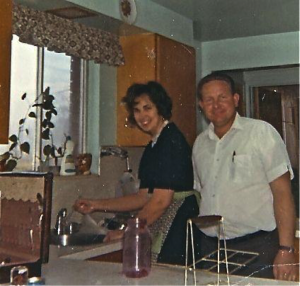Everyday Moments in Your Story

Submitted by admin on Sun, 08/05/2012 – 11:15
“Enjoy the little things, for someday you may look back and realize they were the big things.”
If you could choose an ordinary day to relive and savor in detail, what would it be? Were loved ones there who are now gone? What did you eat and how did it smell? How did you feel? Now, how can you make the most of these memories in your story?
Begin capturing a lifetime in words by starting small—focusing on moments. There are two types of moments: the life-changing, gut-wrenching, character-defining moment and the opposite, the stuff of every day. I covered big moments in a previous article (http://www.rhondalauritzen.com/?q=node/56). Today’s post delves into conjuring up and then utilizing memories of ordinary days that blend together and end up representing entire swaths of time. These are memories that in total impact become far dearer to us than we could have guessed in the middle.
Of course there is not space in a history nor would it make a compelling read to cover all of life’s mundane happenings. We don’t tote around every individual memory. Likewise, in writing a history, hours blur into years and it is almost as if these times become a memory montage where every breakfast scene is now represented by one breakfast scene. Every Saturday tossing a ball with Dad is illustrated by one such day. Every Christmas is illuminated through the best—or worst—of these holiday meals.
So in addition to telling the stories of times that made all the difference, filling in details will provide richness and context. This is where everyday moments come in. The best use of everyday memories is to create scenes alive with sensory and emotional texture.
In my writing, I have done this in two ways. For simple journaling, I sometimes write a “day in the life” chronicling the sort of details I wish I had from my ancestors. This is a no-nonsense approach to tell the reader how it was. But for a compelling, story-driven approach we follow the “show don’t tell” mantra.
To write a great story, weave details like these into a narrative that will immerse the reader in a scene. Rich details stimulate a reader’s imagination. In other words, if the purpose of big life-changing moments is to move the story forward then the purpose of small moments is to create a mood of place and time.
For example in my parents’ memoir, Every Essential Element, I set many scenes in the high mountains where my family camped each summer. Check out this brief essay that utilizes this alpine setting to tell a story of one day—a day that might have occurred a hundred times in my childhood. I then bring it around to a lesson internalized in adulthood. http://www.rhondalauritzen.com/?q=node/57
In your own writing, you might set a kitchen scene where everyday activities—an amalgamation of all kitchen scenes from that period of life—are unfolding. Then you introduce a significant event that propels the story forward. Remember that setting might be lovely but it isn’t a story. In a story, something happens: conflict, action by the protagonist, character development and resolution.
To get your creative juices flowing, try chewing on these questions:
• How did your parents and grandparents go about teaching you life lessons and useful skills? How did you feel about it at the time? Has your perspective on this shifted over the years?
• What did your family do for fun together?
• When did you feel closest to your loved ones?
• Which of all holidays were your favorite and what was the feeling that made them special?
• If you were to make a soundtrack for a particular period, what songs would it include?
• What struggles did you face? Did you feel adequate to handle them or did you have doubts? In retrospect what did those struggles teach you?
• When you spent time with your best friend(s) what were your activities? What did you talk about?
• Were you close to your siblings? What were your favorite childhood games and what was your relationship like later in life?
• As you look back at photographs, what fashions make you say, “What were we thinking?” And seriously, what were you thinking? What were your favorite clothes, the ones you wish you could still wear?
• How did you feel about your body and your appearance?
• Were your parents and grandparents good cooks? If you could have one meal prepared by them, what would it include? Describe the colors, textures, flavors and aromas. What are your emotions now as you conjure the memory of these foods?
• What are the smells of childhood? Of summer? Of your grandparents’ home? School? Work? What are your favorite smells and what feelings are associated with them?
• Who did you look up to when you were young? Describe a specific memory in which that person was at his or her very best.
When a memory inspires you, write about it to your heart’s content. Examine it to determine what was significant about it. How did this memory shape you? Why does this particular memory linger with you? If you don’t know where to use it in your story right away, just keep it until an opportunity comes along to incorporate it in a scene. As I completed my book many moments written earlier became part of a vignette later, and—alas—some were edited out because they did not add to the storyline. I still kept them in a separate file and some have become inspiration for later writing while some simply remain treasured journal entries.
Read the full series on “Leaving a Legacy Through Story:”